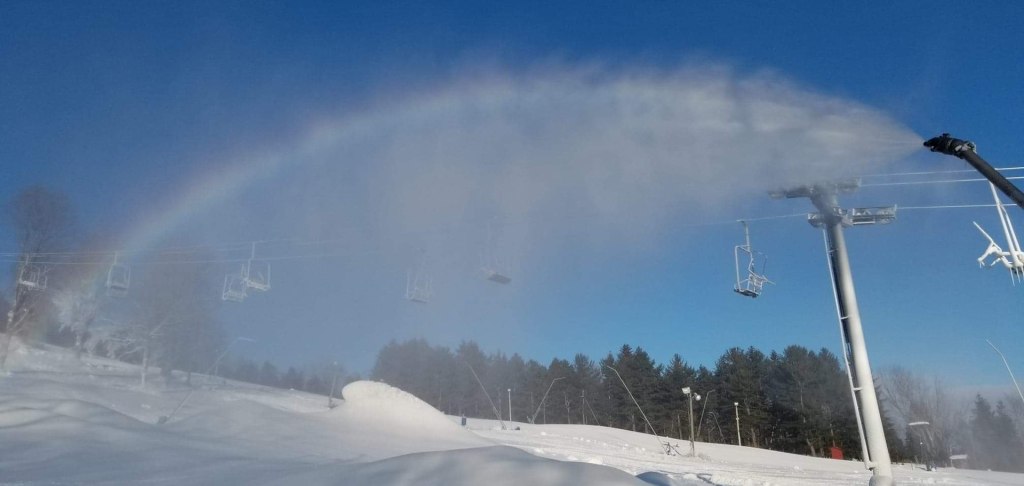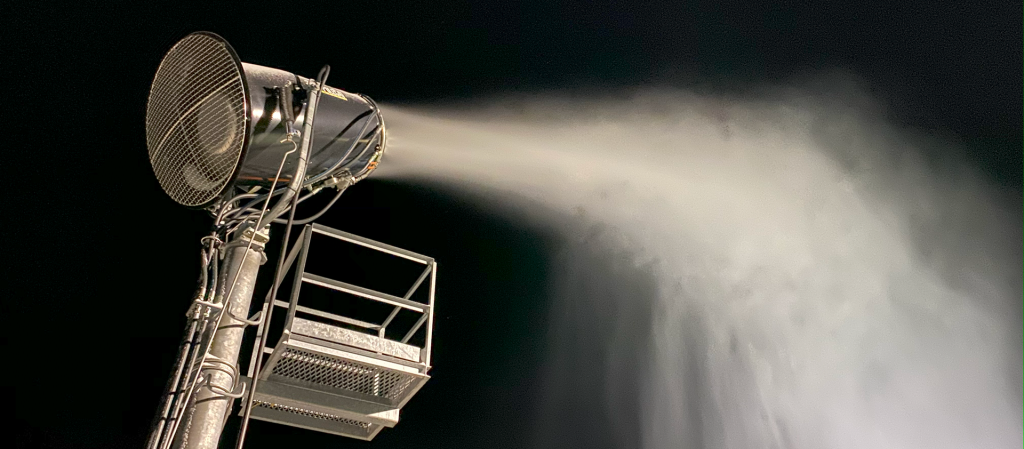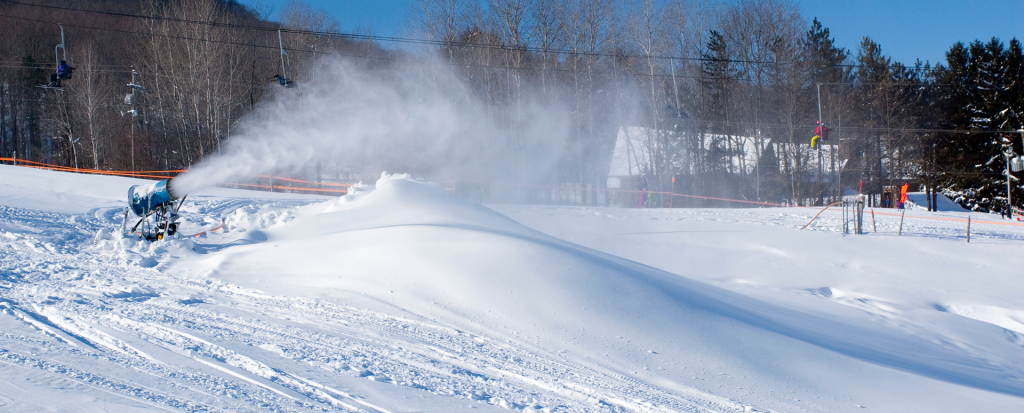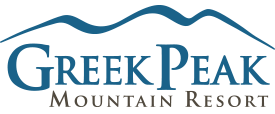Snowmaking Science: How We Make the White Stuff at Greek Peak
Ever wonder how Greek Peak stays snow-covered even when Mother Nature decides to take a vacation? While we love a good blizzard, the secret to keeping the trails fresh isn’t just waiting for the skies to do their thing—it’s snowmaking magic.
Snowmaking might seem like a simple case of turning on some machines and calling it a day, but the reality? It’s part science, part art, and 100% essential to the ski season. Whether you’re new to the slopes or a seasoned shredder, here’s a behind-the-scenes look at how we make the white stuff that keeps the mountain ready for action.

The Basics: How Snowmaking Works
Snowmaking isn’t about tossing crushed ice on the slopes (though that would be hilarious). It’s about recreating nature’s process in just the right conditions. Here’s the breakdown:
- The Ingredients: Water + Air + Cold Temps = Snow
We pump water from reservoirs or ponds and blast it into the air using snow guns, where it freezes into tiny snowflakes before landing on the trails.
- The Perfect Temperature:
The magic number is around 28°F (-2°C) or lower—this is the “wet bulb” temperature, which factors in humidity. Higher humidity means colder temps are needed, but when it’s dry, we can make snow at slightly warmer temperatures.
- High Pressure, Fine Mist:
The snow guns use high-pressure air and water to create a fine mist. The finer the mist, the better the snow quality. The droplets need time to freeze as they fall—if they hit the ground too soon, you get slush. No one wants that.

The Art of Snowmaking
It’s not just about flipping a switch—timing, wind, and technique all play a role. Our snowmaking team monitors conditions constantly to decide:
- Where snow is needed most.
- When to start blasting the guns.
- How much snow to lay down.
Plus, positioning snow guns is critical. We aim for areas that hold snow the longest and build base layers that last throughout the season.
How Much Snow Can We Make?
On a cold night, with all systems firing, Greek Peak can produce up to several feet of snow in key areas. We focus on high-traffic zones first, like:
- Beginner areas.
- Popular intermediate runs.
- Main routes to lifts.
Once those are covered, we move to other trails and freshen up expert runs where possible.

Nerd Corner: The Science Behind Snowmaking ❄️🔬
So, what makes machine-made snow different from the natural stuff?
- Crystal Shape & Density:
- Natural snow forms delicate, six-sided crystals that grow slowly as they fall through the atmosphere. Machine-made snow, on the other hand, is denser and rounder because it’s created fast—water droplets freeze quickly, forming tiny, more compact spheres. This gives machine snow that slightly icier feel under your skis.
- Translation? Machine snow is hardier and sticks around longer, even when temps fluctuate.
- Wet-Bulb Temperature – The Magic Number:
- Snowmaking depends on wet-bulb temperature, which combines air temperature and humidity. The drier the air, the easier it is to make snow.
- Example: At 28°F and low humidity, snow guns fire easily. But if humidity is high, the same guns may need 24°F or colder to make quality snow.
Pro Tip: If you’re on the slopes and notice the snow guns running even when it feels “warm,” it’s probably because the air is dry enough to make it work!
- Snow Gun Showdown – Air/Water vs. Fan Guns:
- Air/Water Guns: These use compressed air to blast water droplets into fine mist. Best for creating snow in smaller, tighter spaces or steeper slopes.
- Fan Guns: Big, powerful, and perfect for laying down serious snow over larger areas. They rely on a large fan to distribute mist over wide sections of the mountain.
Bonus Fact: Fan guns can cover up to 60 feet across with a single burst of snow—imagine throwing the world’s biggest snowball!
Fun Fact:
In just 24 hours, Greek Peak’s snowmaking system can produce enough snow to make a 10-foot-wide pile that would tower over 2,000 feet high—that’s taller than the One World Trade Center. Imagine skiing down that mountain of snow!
Why Snowmaking Matters
Sure, natural snowfall is great, but snowmaking keeps the mountain open longer, the conditions better, and the fun more consistent. Without it, ski season would be unpredictable and much shorter.
Even when the mountain looks fully covered, snow guns run to maintain quality—especially after busy weekends.
Why You Should Appreciate It:
Next time you’re carving down a perfectly groomed run, remember—it’s not just Mother Nature at work. The snowmaking team is out there, often overnight, turning water into fun. No snow? No problem. We’ll just powder through it.
About the author:
Mountain Mike is your go-to guide for adventure at Greek Peak Mountain Resort. A seasoned outdoor enthusiast and a master of memorable puns, Mike brings his passion for the outdoors and his knack for storytelling to every article. Join him as he explores the peaks and valleys of adventure, inspiring readers to make every outdoor moment unforgettable.
